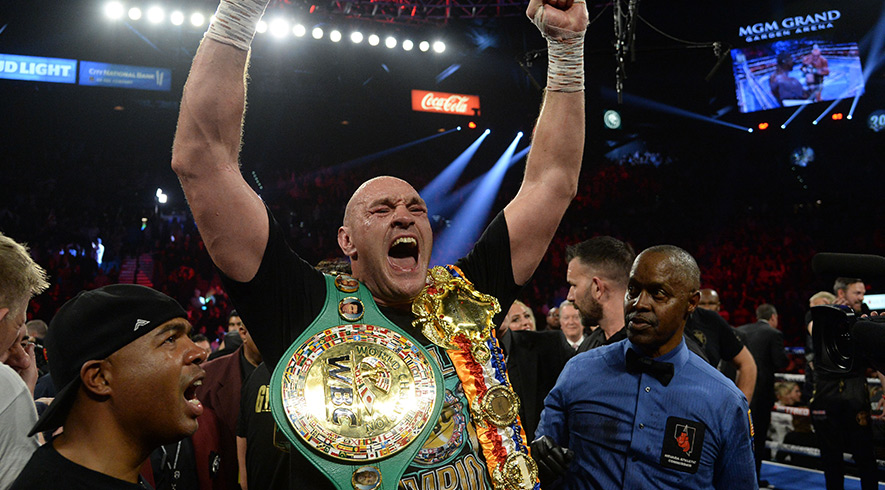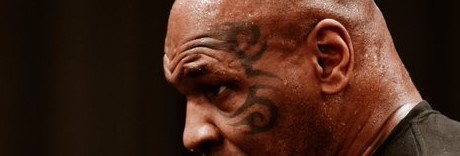With the recent announcement that Golden Boy Promotions will be sandbagging its Shane Mosley-Sergio Mora pay-per-view with Carlos Baldomir (who will be 20 years older than his opponent) and Vivian Harris (two fights removed from being taken out of the ring on a stretcher), thereby converting the Staples Center into some kind of temporary necropolis, undercards continue to be a subject of what passes for debate in boxing.
This smorgasbord comes on the heels of a overhyped undercard for the Juan Manuel Marquez-Juan Diaz bout, notable chiefly for shameless media puffery on its behalf and a strange obsession with the Trinity: three fighters on the skids, three fighters coming off of a loss, three fighters over their best fighting weight, and three fights with the winner all but predetermined. In addition, the main event between Marquez and Diaz, a rematch of an excellent fight, suffered from the fact that no one thought Diaz would win. Not even Bob Arum got Marvin Hagler and Tommy Hearns back in the ring after their eight-minute firestorm in 1985 simply because it would be hard to sell a rematch with such a conclusive ending. “I couldn’t sell it,” Bob Arum told George Kimball. “Even though the fight was a big success, in order to sell a rematch we would have to convince people that if they fought again the result would be any different. Who would pay to see it?”
The scenario was similar for the Marquez-Diaz rematch. Marquez struggled early and then left a bloody Diaz counting atoms on his back. A certain amount of mystery, therefore, failed to accompany the fighters into the ring.
How is it possible that undercards have slipped so drastically over the years that some can consider the recent Marquez-Diaz lineup “stacked,” “loaded,” and Supercalifragilistic?
Whenever a writer—one who understands that boxing did not begin when he first began to hunt and peck at a keyboard—talks about what a good pay-per-view undercard is, he invariably invokes the series of Don King shows promoted in the early and mid-1990s. Incredible fights like Felix Trinidad-Yori Boy Campas, Gerald McClellan-Julian Jackson, and Azumah Nelson-Jesse James Leija were all supporting bouts on Don King pay-per-views.
In 1994 King staged perhaps his most infamous card, “Revenge: The Rematches,” which featured Julio Cesar Chavez-Frankie Randall II, Terry Norris-Simon Brown II, Gerald McClellan-Julian Jackson II, Azumah Nelson-Jesse James Leija II, and, to top it all off, Ricardo Lopez (at the time 36-0) against Kermin Guardia (21-0). For a consumer, these cards were almost always a guaranteed smash, despite some of the strange decisions rendered in favor of King fighters. Keep in mind that fewer homes were wired for pay-per-view back then and that the prices of these events were much cheaper than they are now. No one was asking you to fork over $50.00 for the right to see Rocky Juarez. Of course, King charged $50.00 for the world to see if Peter McNeeley could wrap Mike Tyson in his cocoon of horror, but, unlike the toothless media today, not many were puffing that mismatch up. Now and then, King would put on a dud, typically a card with too many heavyweights, but
he had a reputation among fans as solid as the one he had cultivated with the FBI.
King produced these cards as an extension of his showman/hustler persona. His outsized ego demanded “super events” at all costs and his reputation for insane line-ups (six “world championship” fights in one night!) gave him another reason for braggadocio. In many ways, King personified the American lust for “Bigger Is Better.” In fact, one reason King has slipped off the radar over the last few years is that he has never been able to thrive on club shows or ESPN level cards. When he began to lose top attractions–either by retirement or disgruntlement–like Tyson, Holyfield, Trinidad, Chavez, etc., King no longer had the box office draws to rally the rest of his fighters around in what, theoretically, was a trickle down effect for his stable. So his clients sat around, inactive, waiting for the next big event, which never came. For years, however, King staged pay-per-views that quickly crystallized into legend.
So, was King less concerned about the bottom line than other promoters? Did he think providing quality events was good for business in the long run? Was this just his way of grandstanding or flexing? Why have undercards suffered over the years at the hands of Top Rank, Golden Boy Promotions, and Main Events? How was it possible for these Don King cards—that make many pay-per-views over the last decade resemble the equivalent of boxing soup kitchens—to be produced?
In boxing, shadowed in perpetual twilight and accompanied by a 24/7 Theremin soundtrack, things are rarely as they appear, and perhaps the answer to the last question posed above (and a hint as to why contemporary undercards reek) can be answered with a few quotes.
From The Life and Crimes of Don King by Jack Newfield (on a piece written by Michael Katz of The New York Daily News concerning an affidavit against King): “The story also cited King’s gambit of billing Tyson for King’s inflated purses to fighters on Tyson undercards who were managed by Carl King, naming specifically Julian Jackson and Azumah Nelson. Tyson also paid for Simon Brown’s purse at a time King was trying to get Brown to sign a long-term contract with him.”
From the Associated Press, December 11, 2003 (On Terry Norris and Don King): “The boxing promoter Don King agreed to pay the former champion Terry Norris $7.5 million yesterday as a jury was debating the boxer’s contention that King stole money from him, Norris’s lawyer said.”
From The New York Times, October 22, 1995 (When Julio Cesar Chavez testified during a Federal trial against King): “Worse, Mr. Chavez said he has often signed blank contracts with Mr. King. And many times, he said, the purses have turned out to be much smaller than Mr. King has promised.”








